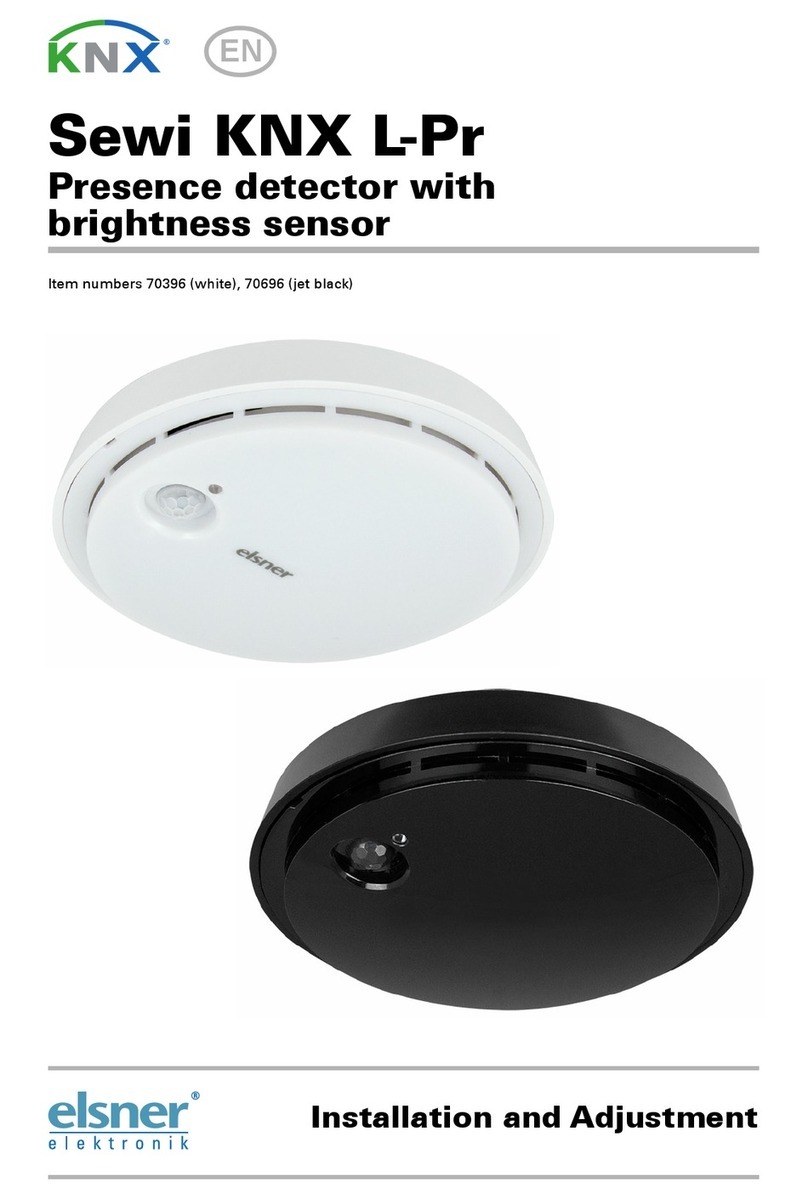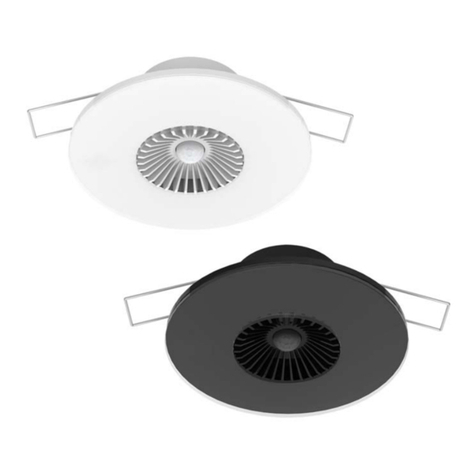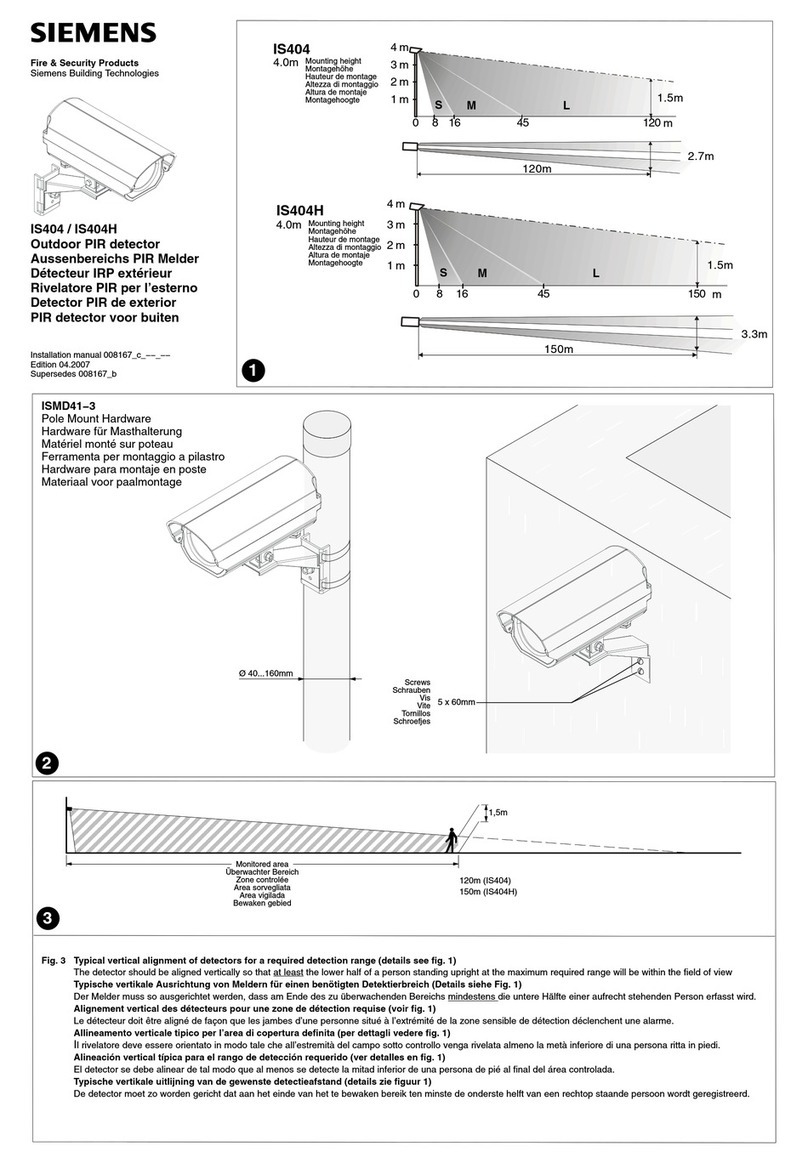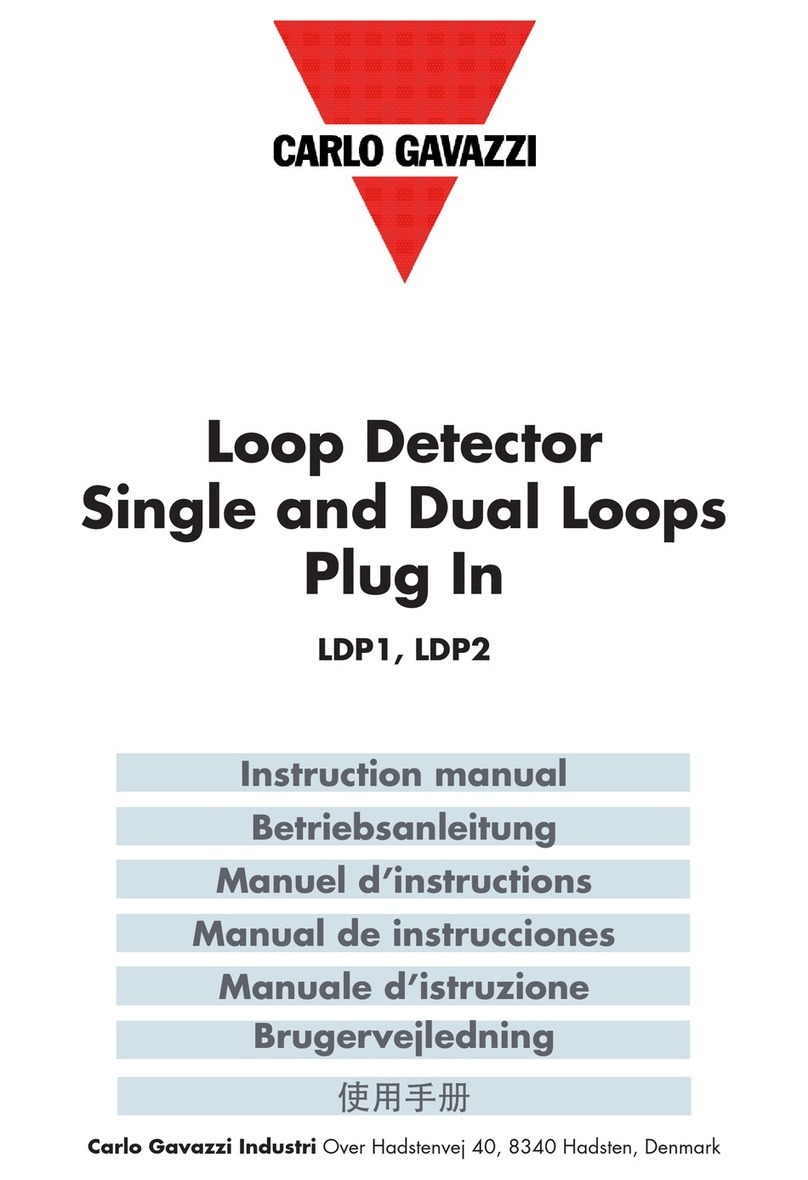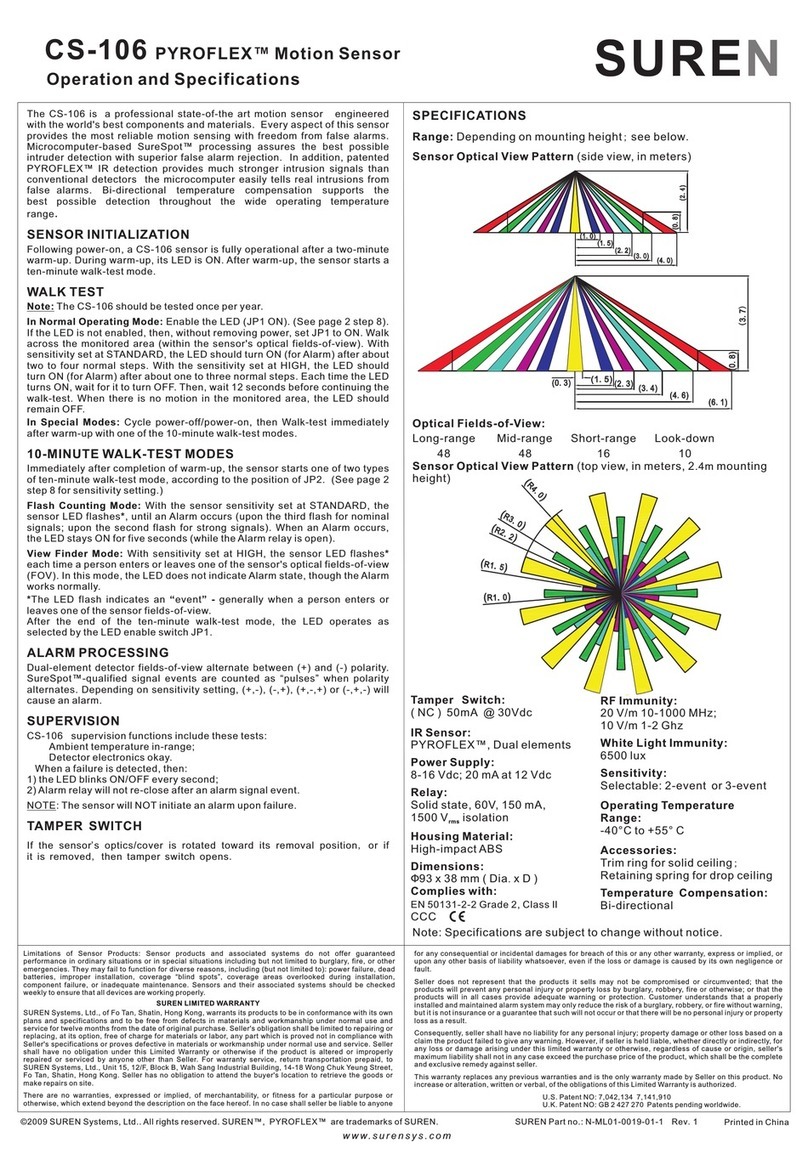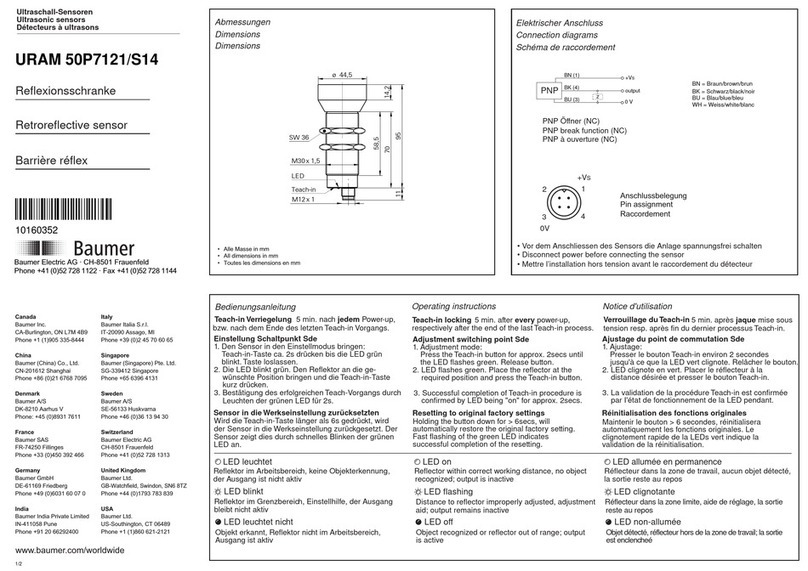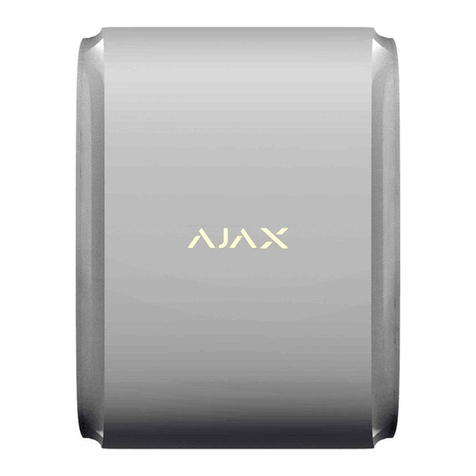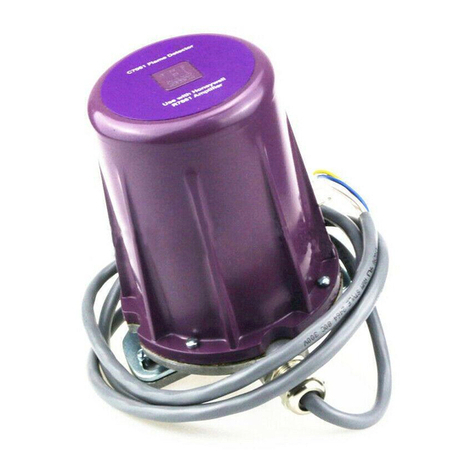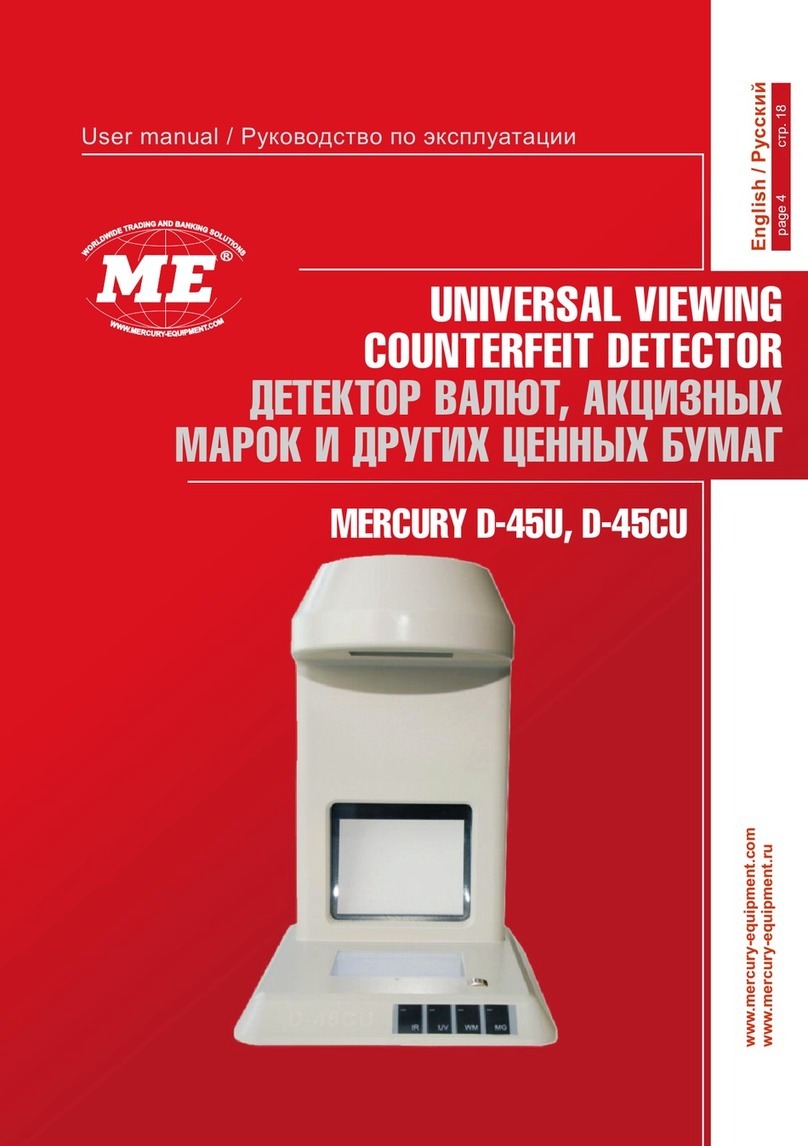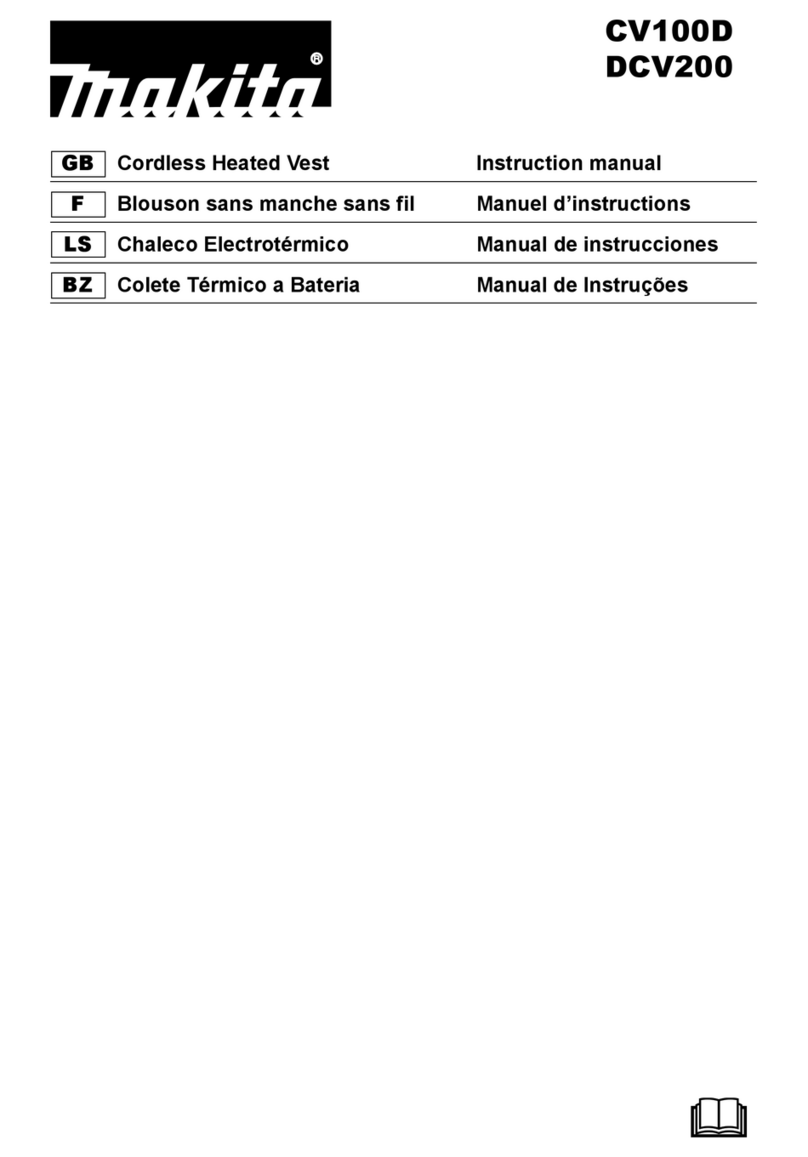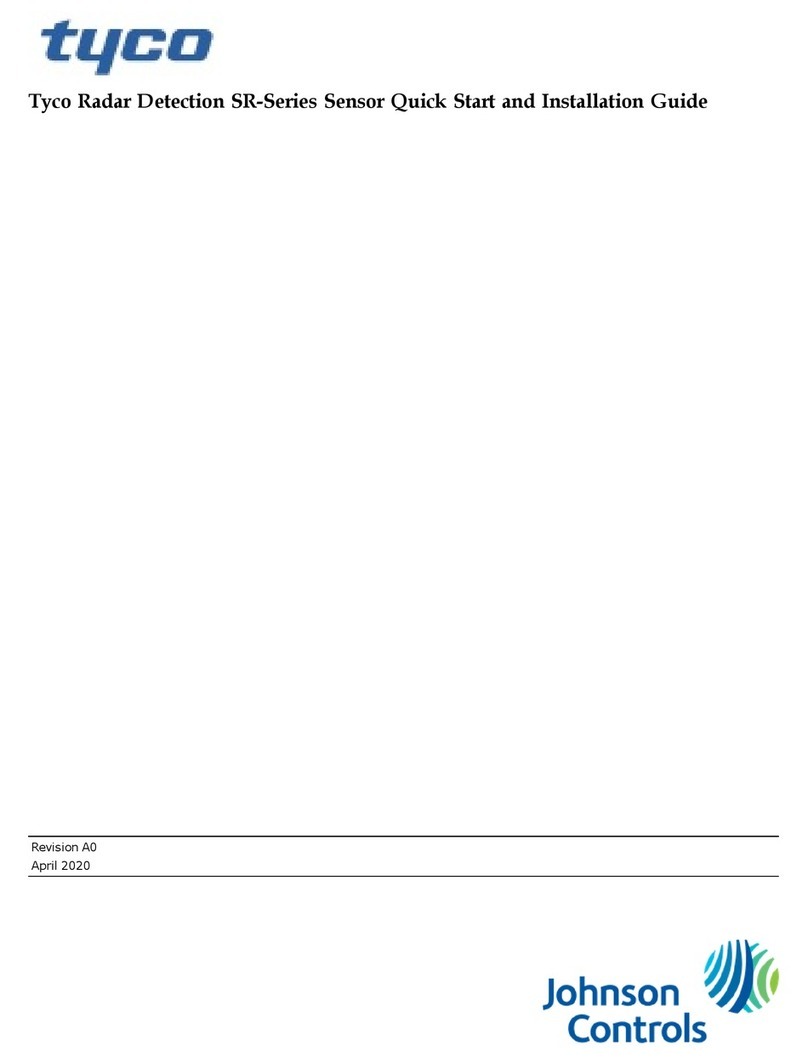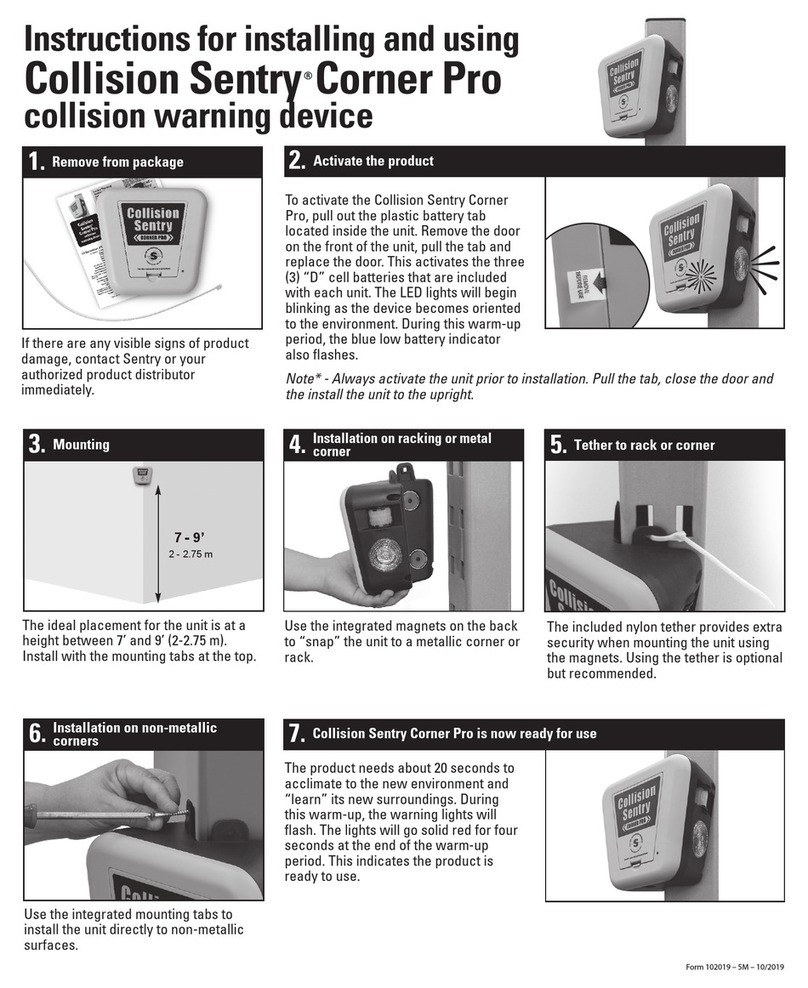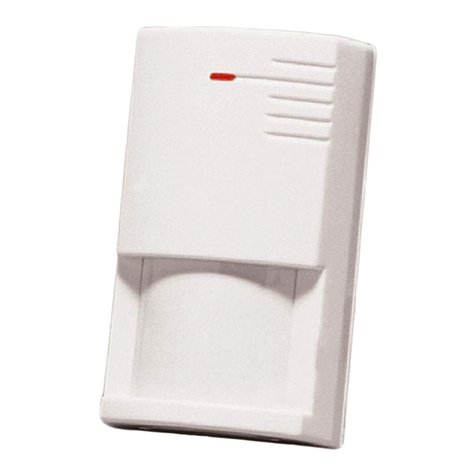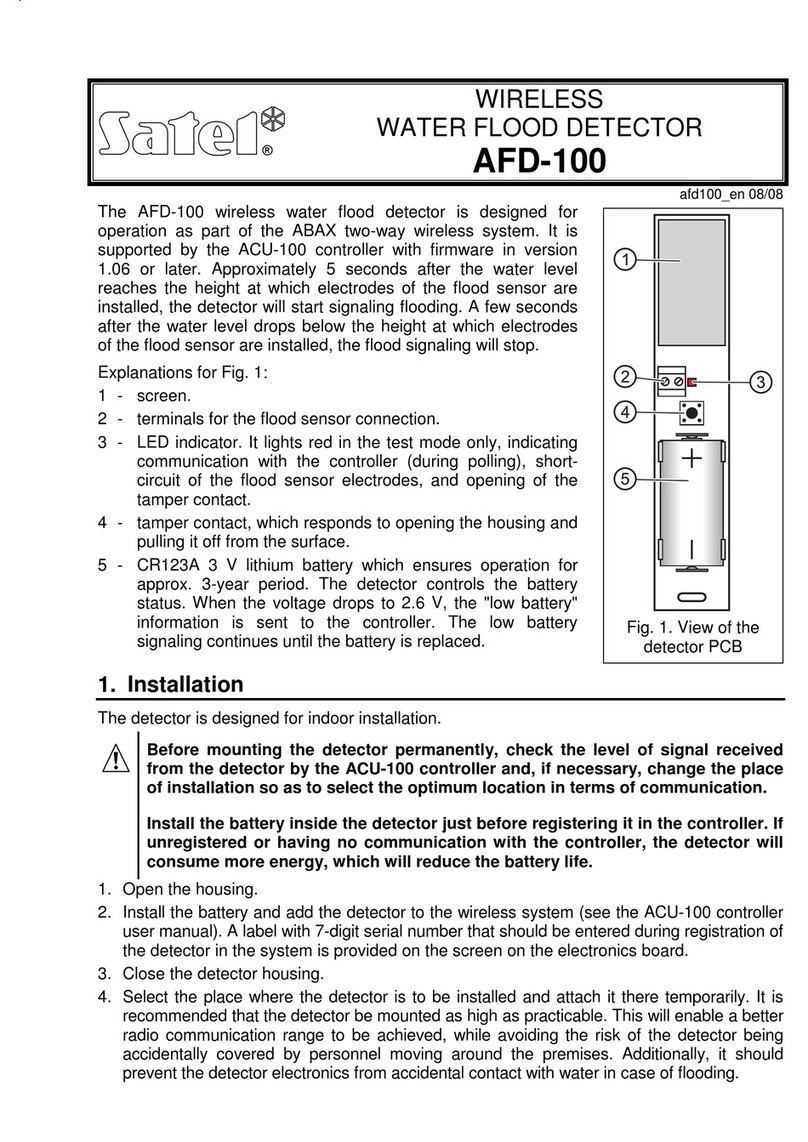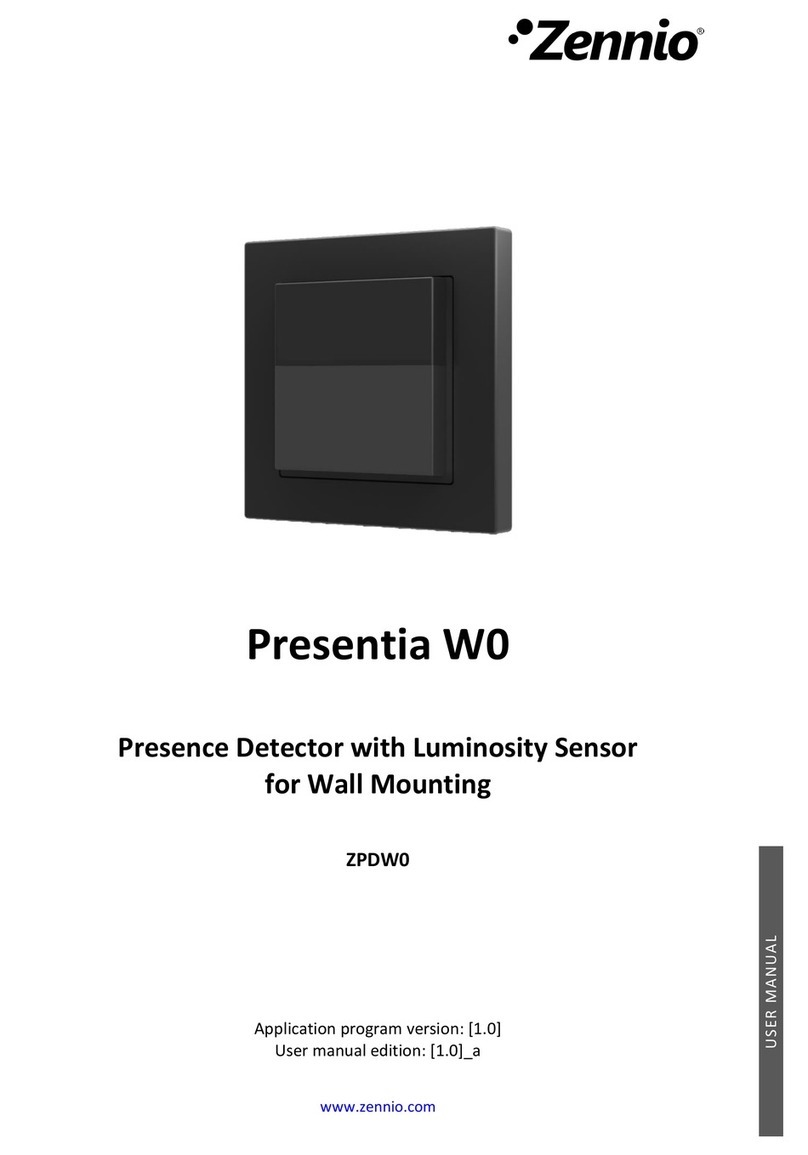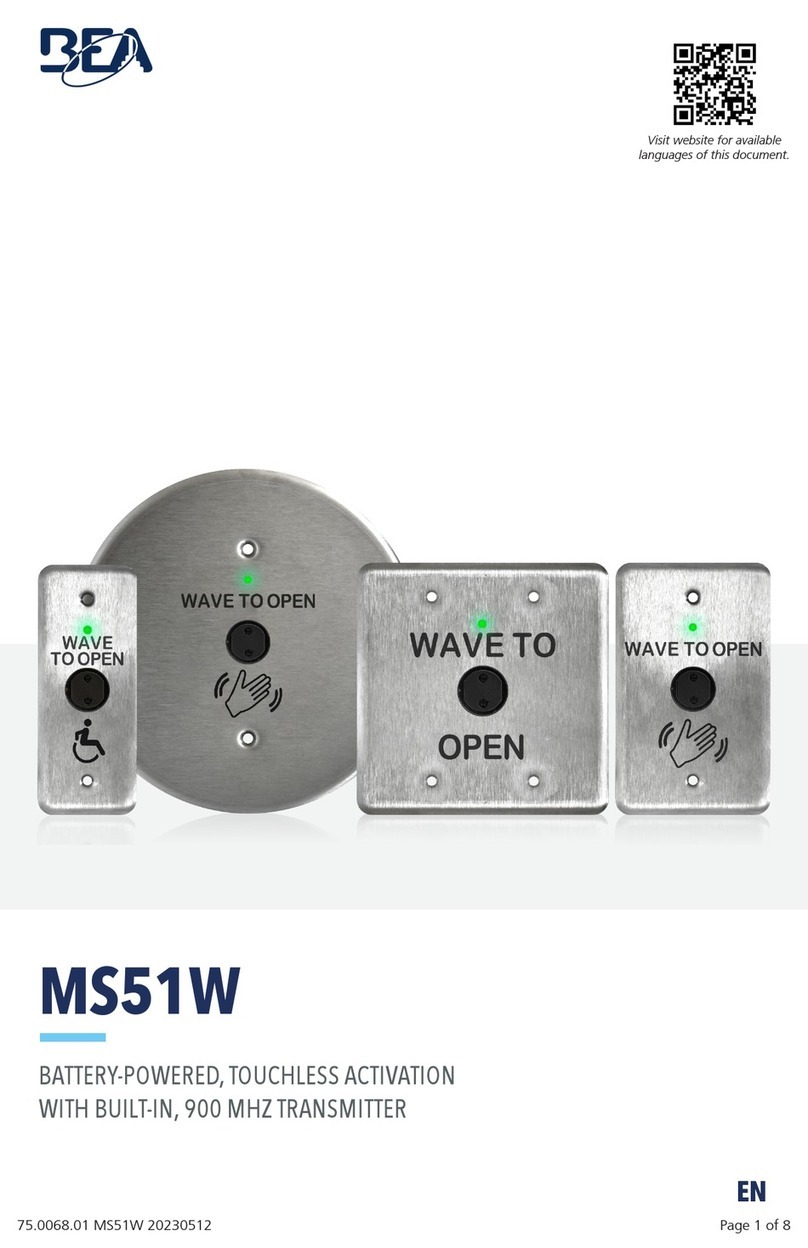elsner elektronik KNX W User manual

Wind Sensor KNX W 1
Wind Sensor KNX W • Version: 18.04.2023 • Technical changes and errors excepted. • Elsner Elektronik GmbH • Sohlengrund 16 • 75395 Ostelsheim • Germany • www.elsner-elektronik.de • Technical Service: +49 (0) 7033 / 30945-250
KNX W
Wind Sensor
Technical specifications and installation instructions
Item number 70123
1. Description
The Wind Sensor KNX W measures wind speed and transfers the values to the
KNX system. Three switching outputs with adjustable threshold values as well as
additional AND and OR logic gates are available.The sensor system, the evaluation
electronics and the electronics of the bus connection are mounted in a compact
housing.
Functions:
•Wind measurement: The wind strength measurement takes place
electronically and thus noiselessly and reliably, even during hail, snow and
sub-zero temperatures. Even turbulent air and anabatic winds in the vicinity
of the weather station are recorded
•Wind sensor monitoring: If the wind measurement value changes by less
than ± 0.5 m/s within 48 hours, the maximum measurement value of 35 m/s
is output as a fault message. All wind alarms with a limit value below 35 m/
s become active as a result
•3 threshold values can be adjusted per parameter or via communication
objects
•8 AND and 8 OR logic gates with each 4 inputs. Every switching incident
as well as 8 logic inputs (in the form of communication objects) may be used
as inputs for the logic gates. The output of each gate may optionally be
configured as 1 bit or 2 x 8 bits
Configuration is made using the KNX software ETS. The product file can be dow-
nloaded from the Elsner Elektronik website on www.elsner-elektronik.de in the
“Service” menu.
1.1. Deliverables
• Sensor with combined wall/pole mounting
• 2x stainless steel installation band for pole installation
1.2. Technical specifications
The product conforms with the provisions of EU directives
2. Installation and commissioning
Installation, testing, operational start-up and troubleshooting should
only be performed by an authorised electrician.
CAUTION!
Live voltage!
There are unprotected live components inside the device.
• Inspect the device for damage before installation. Only put undamaged
devices into operation.
• Comply with the locally applicable directives, regulations and provisions
for electrical installation.
• Immediately take the device or system out of service and secure it against
unintentional switch-on if risk-free operation is no longer guaranteed.
Use the device exclusively for building automation and observe the operating ins-
tructions. Improper use, modifications to the device or failure to observe the ope-
rating instructions will invalidate any warranty or guarantee claims.
Operate the device only as a fixed-site installation, i.e. only in assembled condition
and after conclusion of all installation and operational start-up tasks, and only in
the surroundings designated for it.
Elsner Elektronik is not liable for any changes in norms and standards which may
occur after publication of these operating instructions.
2.1. Location
Select an assembly location at the building where wind speed may be collected by
the sensor unobstructedly.
At least 60 cm of clearance must be left all round the device.This facilitates correct
wind speed measurement without eddies. The distance concurrently prevents
spray (raindrops hitting the device) or snow (snow penetration) from impairing the
measurement. It also does not allow birds to bite it.
2.2. Mounting the sensor
2.2.1. Attaching the mount
The sensor comes with a combination wall/pole mount. The mount comes adhered
by adhesive strips to the rear side of the housing. Fasten the mount vertically onto
the wall or pole.
2.2.2. View of rear side and drill hole plan
2.2.3. Preparing the sensor
The sensor cover snaps in on the left and right along the bottom edge (see Fig.).
Remove the cover. Proceed carefully, so as not to pull off the wire connecting the
PCB in the bottom part with the cover (cable with plug).
Lead the cable for the voltage supply and bus connection through the rubber seals
on the bottom of the device and connect Voltage L/N and Bus +/- to the terminals
provided.
The connection cable must be plugged in between the cover and the circuit board.
Housing Plastic material
Colour White / translucent
Mounting On-wall
Degree of protection IP 44
Dimensions approx. 96 × 77 × 118 (W × H × D, mm)
Weight approx. 170 g
Ambient temperature Operation -30…+50°C, storage -30…+70°C
Operating voltage 20...30 V DC.
An appropriate power supply unit can be
obtained from Elsner Elektronik.
Cable cross-section Massive conductors of up to 1.5 mm² or con-
ductors with fine wires
Current max. 30 mA., max. 0,4 W.
Residual ripple 10%
Data output KNX +/- bus terminal plug
Group addresses max. 254
Allocations max. 255
Communication objects 80
Measurement range
Wind
0...35 m/s
Fig. 1
There must be at least 60 cm of space
below, to the sides and in front of the
sensor left from other elements (struc-
tures, construction parts, etc.).
60 cm
Fig. 2
The wind sensor must be mounted on
a vertical wall (or a pole).
Wall
or
pole
Fig. 3
The wind sensor must be mounted in
the horizontal transverse direction
(horizontally).
Horizontal
Fig. 4
When wall mounting: flat side on wall,
crescent-shaped collar upward.
Collar
Fig. 5
When pole mounting: curved side on po-
le, collar downward.
Collar
Fig. 6
Different mounting arms are available
from Elsner Elektronik as additional, op-
tional accessories for flexible installation
of the weather station on a wall, pole or
beam.
Example of the use of a mounting arm:
Due to flexible ball joints, the sensor can
be brought into ideal position.
Fig. 7
Example use of the hinge arm mounting:
Fitting to a pole with worm drive hose
clips
Slot hole 7,5 x 5 mm
Fig. 8 a+b
Drill hole plan
Dimensions of rear side
of housing with bra-
cket. Subject to change
for technical enhance-
ment.
Fig. 9
1 Cover Snaps
2 Bottom part of housing
Unsnap cover and
remove upwards
1
2
Fig. 10
Remove the cable shielding under the
circuit board and only feed the con-
nector cables upwards through the
openings in the circuit board.
EN

Wind Sensor KNX W 2
Wind Sensor KNX W • Version: 18.04.2023 • Technical changes and errors excepted. • Elsner Elektronik GmbH • Sohlengrund 16 • 75395 Ostelsheim • Germany • www.elsner-elektronik.de • Technical Service: +49 (0) 7033 / 30945-250
2.2.4. PCB layout
2.2.5. Mounting the weather station
Close the housing by putting the cover back over the bottom part. The cover must
snap in on the left and right with a definite “click”.
To remove it, the weather station can be simply pulled upwards out of the mount,
against the resistance of the fastening.
2.3. Notes on mounting and commissioning
Do not open the device if water (rain) might ingress: even some drops might da-
mage the electronic system.
Observe the correct connections. Incorrect connections may destroy the sensor or
connected electronic devices.
The measured wind value and thus all other wind switching outputs may only be
supplied 60 seconds after the supply voltage has been connected.
After the auxiliary voltage has been applied, the device will enter an initialisation
phase lasting a few seconds. During this phase no information can be received or
sent via the bus.
3. Addressing of the device at the bus
The device is supplied with the bus address 15.15.255. You can program another
address into the ETS by overwriting the 15.15.255 address or by teaching via the
programming key on the circuit board inside the housing.
4. Maintenance
DANGER!
Risk of injury caused by components moved automatically!
The automatic control can start system components and place people
in danger (e.g. moving windows/awnings if a rain/wind alarm has
been triggered while cleaning).
• Always isolate the device from the mains for servicing and cleaning
(e. g. switch off or remove the fuse).
The device must regularly be checked for dirt twice a year and cleaned if necessary.
In case of severe dirt, the sensor may not work properly anymore.
ATTENTION
The device can be damaged if water penetrates the housing.
• Do not clean with high pressure cleaners or steam jets.
5. Disposal
After use, the device must be disposed of in accordance with the legal regulations.
Do not dispose of it with the household waste!
Fig. 11
1 Tension clamp for volta-
ge supply (20...30 V DC).
Massive conductors of
up to 1.5 mm² or conduc-
tors with fine wires. Ter-
minal configuration inde-
pendent from polarity (+/
- or -/+).
2 Opening for the cable for
the voltage supply and
for bus cable
3 Slot for KNX clamp +/-
4 Programming push but-
ton
5 Programming LED
12
4
5
3
Fig. 12
Make sure the cover and bottom part
are properly snapped together! This
picture is looking at the closed sensor
from underneath.
Fastening
Fig. 13
Push the housing from above into the
fastened mount. The bumps on the
mount must snap into the rails in the
housing.
Fig. 14
After installation, remove the protecti-
ve sticker on the wind sensor and the
"distance" sticker on the top of the co-
ver.
This manual suits for next models
2
Other elsner elektronik Security Sensor manuals


